
Stunt Car Racer is a racing video game developed by Geoff Crammond. It was published in 1989 by MicroProse, under their MicroStyle and MicroPlay labels in the United Kingdom and in the United States, respectively. The game pits two racers on an elevated track on which they race in a head-to-head competition, with ramps they must correctly drive off as the main obstacle.

Ace of Aces is a combat flight simulation video game developed by Artech Digital Entertainment and published in 1986 by Accolade in North America and U.S. Gold in Europe. It was released for the Amstrad CPC, Atari 8-bit family, Atari 7800, Commodore 64, MSX, MS-DOS, Master System, and ZX Spectrum. Set in World War II, the player flies a RAF Mosquito long range fighter-bomber equipped with rockets, bombs and a cannon. Missions include destroying German fighter planes, bombers, V-1 flying bombs, U-boats, and trains. In 1988 Atari Corporation released a version on cartridge styled for the then-new Atari XEGS.

Tornado Low Level is a multidirectional flight game developed by Costa Panayi and published in 1984 by the company he co-founded, Vortex Software. The game was released for the ZX Spectrum in 1984, with ports for the Amstrad CPC and Commodore 64 in 1985.
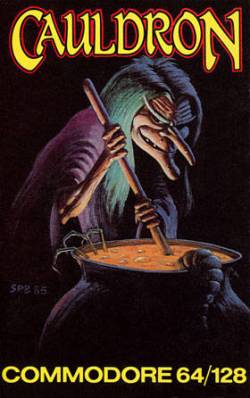
Cauldron is a video game developed and published by British developer Palace Software in 1985 for the ZX Spectrum, Commodore 64, and Amstrad CPC home computer. It contains both platform game and horizontally scrolling shooter sections. Players control a witch who aims to become the "Witch Queen" by defeating the "Pumpking"

Spindizzy is an isometric video game released for several 8-bit home computer formats in 1986 by Electric Dreams Software. It combines action and puzzle game elements. Players must navigate a series of screens to explore a landscape suspended in a three-dimensional space. Development was headed by Paul Shirley, who drew inspiration from Ultimate Play the Game games that feature an isometric projection.
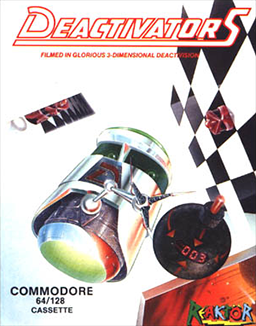
Deactivators is a 1986 puzzle video game designed by David Bishop and Chris Palmer, developed by Tigress Marketing and System Software, and published by Ariolasoft's action game imprint Reaktor. The player controls bomb disposal robots known as deactivators and must use them to deactivate bombs planted by terrorists in five research complexes. The concept for the game came from a brainstorming session between Bishop and Palmer; its design and development took five to six months to complete. It was released for the Amstrad CPC 464, Commodore 64, and ZX Spectrum platforms in October 1986.

Beach Head II: The Dictator Strikes Back is a 1985 video game for the Commodore 64, a sequel to Beach Head, developed and published by Access Software. It was designed by Bruce Carver and his brother, Roger, and was released for the Amstrad CPC, Apple II, Atari 8-bit family, Commodore 64, and ZX Spectrum.

Zub is a 1986 platform video game designed by Ste and John Pickford, developed by Binary Design, and published by Mastertronic for the Amstrad CPC, Commodore 64 and ZX Spectrum. The game has the player control Zub, who has to travel to different planets to retrieve the Green Eyeball of Zub. A parody of the game Light Force, called Lightfarce, was added in as an easter egg. The music on all computers was composed by David Whittaker.

Cobra is a 1986 platform game based on the film of the same name. It was developed and published by Ocean Software, and was released in Europe for Amstrad CPC, Commodore 64 (C64), and ZX Spectrum. By 1990, it received a budget re-release.
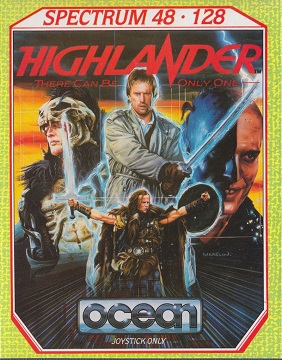
Highlander is a video game tie-in to the Highlander franchise released in 1986, the same year as the film, published by Ocean Software for the ZX Spectrum, Commodore 64 and Amstrad CPC home computers. Highlander was panned by reviewers.

Blade Runner is a video game loosely inspired by the 1982 film Blade Runner, but is technically based on the film soundtrack by Vangelis as the publishers were unable to obtain a licence for a film tie-in. The game was published in 1985 by CRL Group PLC for Commodore 64, ZX Spectrum, and Amstrad CPC. Reviews of the game were mostly negative.

Heartland is a platform game for the ZX Spectrum, Amstrad CPC, and Commodore 64 released by Odin Computer Graphics in 1986.

Light Force is a 1986 vertically scrolling shooter designed by Greg Follis and Roy Carter, developed by their company Gargoyle Games, and published under their Faster Than Light imprint. It was released for the Amstrad CPC, Commodore 64, and ZX Spectrum platforms.

Short Circuit is a video game based on the 1986 film of the same name. It was developed and published by British company Ocean Software, and was released in Europe in 1987, for Amstrad CPC, Commodore 64 (C64), and ZX Spectrum. It was published again in 1989 as a budget re-release.

Falklands '82 is a 1986 turn-based strategy video game developed and published by Personal Software Services for the ZX Spectrum and Commodore 64. It is the fifth instalment of the Strategic Wargames series. The game is set during the 1982 Falklands War and revolves around the Argentine occupation and subsequent British re-capture of the Falkland Islands. The player controls the British Task Force as they must either defeat all Argentine forces on the archipelago or re-capture every settlement.

Swords and Sorcery is a fantasy role playing video game developed and published by Personal Software Services. It was released exclusively in the United Kingdom for the ZX Spectrum in 1985 and the Amstrad CPC in 1986. The game contains elements of dungeon crawling and revolves around a customisable player-character navigating through catacombs in order to secure a large wealth of treasure, whilst simultaneously collecting seven pieces of sacred armour.
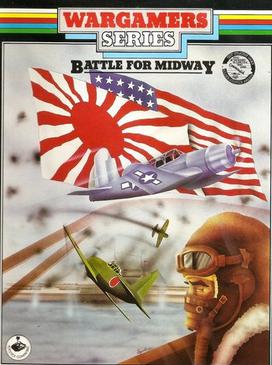
Battle for Midway is a turn-based strategy video game developed and published by Personal Software Services. It was first released in the United Kingdom and France for the MSX in 1984, and was re-released for the Amstrad CPC, Commodore 64 and ZX Spectrum in 1985. It is the second instalment of the Wargamers series. The game is set during the Battle of Midway in the Pacific Ocean theatre of World War II and revolves around the United States Navy attacking a large Imperial Japanese fleet stationed at Midway Atoll, in retaliation for the attack on Pearl Harbor.

Ace is a combat flight simulator video game published for the Commodore 64, VIC-20, and Plus/4 in 1985 by Cascade Games. It was ported to the Amstrad CPC, Amstrad PCW, Amiga, and ZX Spectrum.
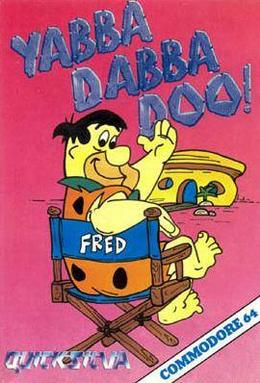
Yabba Dabba Doo! is a 1986 video game developed by British studio Taskset and published by Quicksilva for the Amstrad CPC, Commodore 64 (C64), and ZX Spectrum. It is based on the television series The Flintstones and is the first Flintstones video game.

Knight Rider is a 1986 video game based on the series of the same name. It was developed and published by Ocean Software, and was released in Europe for Amstrad CPC, Commodore 64, and ZX Spectrum.





















